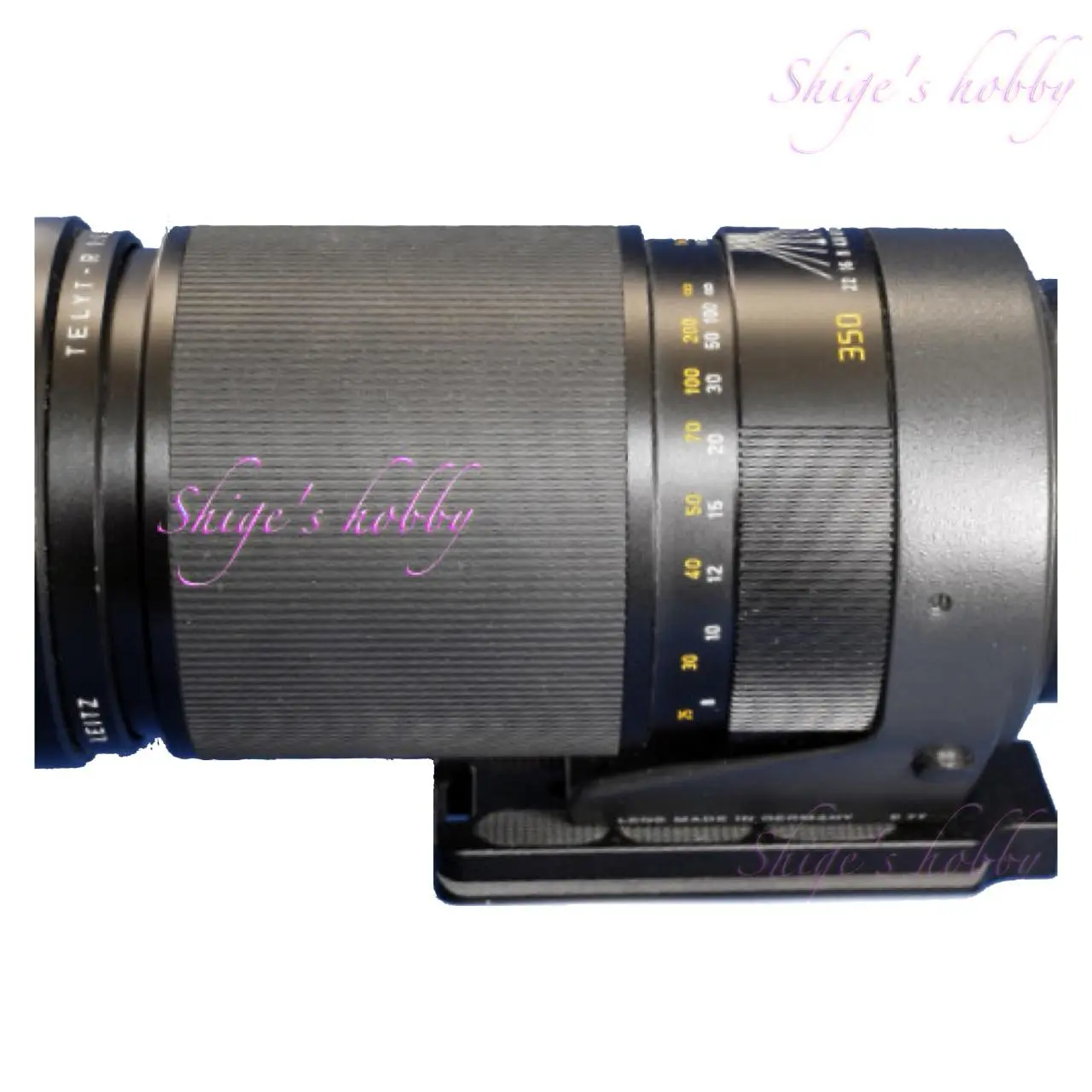A review and sample photos of the Leica R-mount telephoto lens, the TELYT R 350mm F4.8, used with an EOS 1Ds Mk-III and a HASSELBLAD X1DII-50c.
- Please see the disclaimer regarding advertising here.
- Italicized links in the text are advertisement links that take you to other sites.
Table of contents
Gallery
The following cameras were used for the sample photos:
- HASSELBLAD X1DII-50C
- CANON EOS 1Ds Mk-III
Review


1.Overview
The TELYT R 350mm was a telephoto lens for the Leica R mount released in 1979.
According to the Leica-Forum Wiki, 2,650 units were produced by 1993.
The main specifications are as follows; details are provided in the “Specifications and Considerations” section.
- Aperture: f/4.8
- Lens Construction: 7 elements in 5 groups
- Minimum Focus Distance: 3m
- Aperture Blades: 8
- Weight: 1.8kg
2.Usability
The TELYT R 350mm lens barrel has the neat design seen in later Leica R lenses.
The image quality is typical of older telephoto lenses, and the small number of lens elements results in sharp, clear images, but false colors can appear around the edges of the subject. The minimum focusing distance is 3m, so you can’t get very close, but this is probably a standard specification for a telephoto lens.
In terms of operability, the focus ring is wide and easy to turn. The aperture ring is attached to the lens and is well-built to prevent unintentional rotation.
It weighs just under 2kg, but because it’s slender, it doesn’t feel that heavy. Because the lens is 29cm long, it sometimes doesn’t fit in my camera bag when attached to the camera. It has a built-in retractable hood, and its length is ample, making it reassuring for outdoor use.
This lens is occasionally seen on the market, but prices vary widely. The one I own was purchased for a few tens of thousands of yen with a slight haze. It’s likely in good condition, but I’ve seen them go for as much as 150,000 yen.
There are apparently German-made (ELW) and Canadian-made (ELC) versions, but I’ve only ever seen the German-made (ELW) version.
By using the x2 APO-EXTENDER and x2-EXTENDER, it can be used as a 700mm f/11 lens.
Due to the position of the rear lens, it seems that a x1.4 APO-EXTENDER could also be used, but I haven’t tested it in person, so I’m not sure.
■ Digital SLR Camera
When using the TELYT R 350mm with a Canon EOS 1Ds Mk-III, I did not encounter the Err20 error that can occur with some wide-angle Leica R-mount lenses.
This lens has a slow maximum aperture of f/4.8, which makes the viewfinder dark on an SLR camera and makes it difficult to see the subject.
The results showed excellent resolution at the focal plane, but at ISO 100, it was difficult to take blur-free shots at 1/120 with the 350mm focal length at 1/120 because the body does not have image stabilization.
I realized that when shooting at long focal lengths, a camera with in-body image stabilization is indeed more convenient.
■ Medium-Format Digital Mirrorless Camera
The HASSELBLAD X1DII-50C is a mirrorless camera equipped with a 50-megapixel medium-format digital sensor, measuring 44mm x 33mm, which is larger than the sensor size of 35mm film.
Like other Leica R-mount telephoto lenses, the TELYT R 350mm has a wide image circle, covering the sensor size of the X1DII-50c, so there is no visible peripheral shading or vignetting when viewing the images.
The X1DII-50C also does not have a mechanical shutter, so it uses an electronic shutter when shooting with lenses that do not have an internal shutter. The advantage of this is that shutter shock is almost completely eliminated.
Thus, while the camera does not have in-body image stabilization, its practical ISO sensitivity of up to ISO 3200 allows for increased shutter speeds, making it a camera that is less susceptible to camera shake.
However, be aware of rolling distortion, which occurs when the subject moves during shooting, a weakness of electronic shutters.
3.Summary
In conclusion, to sum up the TELYT R 350mm, it is a long lens for its focal length and is not easy to handle. False colors sometimes appear around the subject, and chromatic aberration can be noticeable.
This lens has an older design and a simple lens construction, so aberration correction is insufficient. If you are looking for imaging performance, it is better to choose a telephoto lens with APO, such as the APO TELYT 280mm. However, because it is a manual focus lens, you will need to focus and compose the image simultaneously, which takes some getting used to.
Specifications, considerations, etc.
There is also the TELYT R 250mm F4, which has the same shape as this lens but a slightly shorter focal length.
The Leica R-mount telephoto lenses, under the TELYT name, are available in a wide range from 250mm to 600mm. While lenses up to 280mm are released as individual products, lenses longer than 280mm have a system lens design in which the mount and lens are separated in the center, allowing for a variety of focal lengths and maximum apertures to be created by combining them.
| Item | TELYT 350 (11915) | TELYT 250 (11925) |
| focal length(mm) | 350 | 250 |
| Maximum aperture | 4.8 | 4 |
| Minimum aperture | 22 | 22 |
| Lens configuration | 8 | 8 |
| Leaf blade | 7 elements in 5 groups | 7 elements in 6 groups |
| Minimum distance(m) | 3.0 | 1.7 |
| Lens length(mm) | 286 | 195 |
| Lens max diameter(mm) | 83.5 | 75 |
| Filter type | 77 | 67 |
| Weight(g) | 1,820 | 1,230 |
| Hood | Build in | Build in |
| Lens mount | LEICA R | LEICA R |
| Release date | 1979-1993 | 1980-1993 |
| Production numbers | 2,650 | 3,663 |
Reference links
- Japanese books:All about the R-type Leica/Author: Shinichi Nakamura/Edited by Asahi Sonorama Ads by Amazon japan
- TELYT-R 4.8/350 Leica wiki
- LELYT-R 4.8/350 Detailed Report
Affiliate links
- Leica R lens・Ads by ebay
- Leica M lens・Ads by ebay
- Leica TL・Ads by ebay
- Leica SL・Ads by ebay

Amazon Prime Sale
Update history
- 2025.11.13
- 2024.03.03:Update article
- 2022.02.27:First draft



Be First to Comment